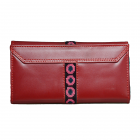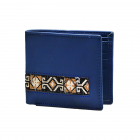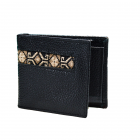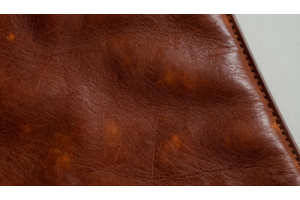Step-by-Step Guide to Building an Ethical Fashion Brand

Step-by-Step Guide to Building an Ethical Fashion Brand
Building an ethical fashion brand requires thoughtful planning, a commitment to sustainability, and a focus on responsible practices. From sourcing eco-friendly materials and ensuring fair labor conditions to designing timeless, high-quality pieces, each step contributes to creating a brand that values people and the planet. Successful ethical brands combine transparency, creativity, and functionality, while educating consumers about the impact of their choices. By carefully selecting suppliers, minimizing waste, and adopting sustainable production methods, you can build a fashion brand that not only stands out in style but also champions social and environmental responsibility.
Whether you’re launching your own ethical accessories or aiming to make your existing practices more sustainable, these 10 actionable steps will help you embed responsibility into every stage of your workflow. By focusing on eco-friendly materials, mindful production, and timeless design, you can create products that not only minimize environmental impact but also delight your customers with quality and durability for years to come.
Table Of Content
- 1. Think Local
- 2. Understand Your Supply Chain
- 3. Use High-Quality, Low-Impact Materials
- 4. Adopt Low-Impact Production Methods
- 5. Design for Longevity
- 6. Eliminate Seasonal Trends
- 7. Opt for Timeless Designs
- 8. Choose Sustainable Packaging
- 9. Add Personalisation Options
- 10. Give Back
- Where Responsibility Meets Elegance
- FAQs
1. Think Local
Thinking local is the first step in building an ethical fashion brand. By sourcing materials and collaborating with local artisans, you support your community while reducing the environmental impact of long-distance transportation. Local production also allows for better oversight of labor practices, ensuring fair wages and safe working conditions. Additionally, working with local suppliers often leads to unique, high-quality materials and designs that reflect your region’s culture and craftsmanship. Embracing local resources not only strengthens your brand’s ethical foundation but also creates a story that resonates with conscious consumers who value sustainability and community support.
Tip:
Explore the Himlayanbits Wallet Collection Now
2. Understand Your Supply Chain
A clear understanding of your supply chain is crucial for building an ethical fashion brand. Every step, from raw material sourcing to manufacturing and distribution, should align with your sustainability and ethical values. Research your suppliers thoroughly to ensure they use environmentally friendly processes, provide fair wages, and maintain safe working conditions. Transparency is key—knowing where your fabrics, dyes, and components come from helps you make informed decisions and allows you to communicate your ethical practices to your customers. By mapping out your entire supply chain, you can identify areas to reduce waste, minimize carbon footprint, and create a responsible, accountable brand from start to finish.
3. Use High-Quality, Low-Impact Materials
Choosing high-quality, low-impact materials is essential for creating an ethical fashion brand that prioritizes sustainability. Opt for fabrics and materials that are eco-friendly, such as organic cotton, recycled polyester, hemp, or sustainably sourced leather. High-quality materials not only last longer, reducing the need for frequent replacements, but they also ensure your products maintain their appearance and functionality over time. By selecting low-impact options, you minimize harmful environmental effects like excessive water usage, chemical pollution, and carbon emissions. Combining durability with sustainability allows your brand to offer stylish, long-lasting products that consumers can feel good about supporting.
4. Adopt Low-Impact Production Methods
Adopting low-impact production methods is a critical step toward building an ethical fashion brand. This means choosing manufacturing processes that minimize energy consumption, reduce water usage, and limit harmful chemical outputs. Techniques like natural dyeing, zero-waste pattern cutting, and small-batch production help lower your environmental footprint while maintaining product quality. Additionally, working with factories that prioritize renewable energy, efficient machinery, and safe working conditions ensures that your production is both sustainable and ethical. For inspiration, look at Himalayanbits stunning handcrafted leather bags all made by artisans in Hunza.
5. Design for Longevity
Designing for longevity is a key principle of ethical fashion. Instead of following fleeting trends, focus on creating timeless, high-quality pieces that remain stylish for years. Durable materials, reinforced stitching, and classic silhouettes ensure your products withstand everyday wear and tear. Longevity also means considering versatile designs that can be worn across seasons and occasions, reducing the need for frequent replacements. By prioritizing durability and timeless aesthetics, you not only reduce waste and overproduction but also strengthen your brand’s reputation for quality and responsibility, giving consumers fashion they can cherish for the long term.
6. Eliminate Seasonal Trends
Eliminating seasonal trends is essential for creating a truly ethical fashion brand. Fast-fashion cycles encourage overproduction, excessive waste, and short-lived clothing. By focusing on timeless designs and versatile pieces, your brand can reduce the pressure to constantly release new collections. This approach not only minimizes environmental impact but also promotes mindful consumer behavior, encouraging customers to invest in items they can wear year after year. Avoiding fleeting trends helps your brand maintain consistency in quality, sustainability, and style, reinforcing a long-term commitment to ethical fashion.
7. Opt for Timeless Designs
Opting for timeless designs is a core strategy for building an ethical fashion brand. Rather than chasing fleeting trends, focus on classic silhouettes, neutral colors, and versatile styles that remain appealing year after year. Timeless designs not only extend the life of your products but also encourage consumers to invest in pieces they can wear repeatedly, reducing the need for frequent replacements. This approach aligns with sustainable practices by minimizing waste and overproduction while promoting a conscious, long-term approach to fashion. By offering timeless pieces, your brand establishes itself as one that values quality, durability, and enduring style.
8. Choose Sustainable Packaging
Choosing sustainable packaging is an important step in building an ethical fashion brand. Opt for materials that are recyclable, biodegradable, or made from recycled content, such as kraft paper, cardboard, or compostable plastics. Avoid excessive packaging, unnecessary plastics, and non-recyclable components. Sustainable packaging not only reduces environmental impact but also reinforces your brand’s commitment to responsible practices. Additionally, thoughtfully designed packaging can enhance the unboxing experience for customers while communicating your dedication to sustainability and ethical fashion.
9. Add Personalisation Options
Offering personalisation options can elevate your ethical fashion brand by creating meaningful, lasting connections with customers. Custom touches such as monograms, bespoke embroidery, or tailored sizing not only make products unique but also encourage customers to value and care for their items longer. Personalisation reduces the likelihood of impulse purchases and waste, as consumers are more likely to cherish items designed specifically for them. By integrating thoughtful customisation into your products, your brand enhances customer loyalty while reinforcing the principles of sustainability, quality, and ethical craftsmanship.
10. Give Back
Giving back is a meaningful way to reinforce your ethical fashion brand’s mission. This can include donating a portion of profits to social or environmental causes, supporting local communities, or partnering with organizations that promote sustainability and fair labor practices. By actively contributing to positive change, your brand not only helps those in need but also builds trust and loyalty among conscious consumers. Giving back demonstrates that your commitment to ethics goes beyond products and profit, making your brand a force for good in the fashion industry.
Where Responsibility Meets Elegance
Sustainability meets sophistication at HimalayanBits. Our women’s leather bags combine timeless design, artisanal craftsmanship, and premium materials—proving you don’t have to compromise style for responsibility.
Start small, make conscious choices, and let every piece reflect your commitment to people and the planet.Explore our Products today and take the first step toward building an ethical fashion brand.
FAQs
1. Why choose a handmade leather wallet over a mass-produced one?
Handmade leather wallets are crafted with superior materials and meticulous attention to detail, ensuring durability, unique character, and timeless style.
2. How long do handmade leather wallets typically last?
With proper care, handmade leather wallets can last for many years, often improving in appearance as the leather naturally ages and develops a patina.
3. What types of leather are used in handmade wallets?
Common types include full-grain, top-grain, vegetable-tanned, and genuine leather, each offering different textures, durability, and aging characteristics.
4. Are handmade leather wallets suitable for both men and women?
Yes. Handmade wallets come in a variety of styles and sizes designed to suit both men’s and women’s preferences, combining function and style.
5. How do I care for a handmade leather wallet?
Regularly clean with a soft cloth, condition with leather care products, and store away from direct sunlight or moisture to maintain its quality and longevity.
6. Can handmade leather wallets have RFID protection?
Yes. Many handmade wallets are designed with RFID-blocking layers to protect your cards from electronic theft without compromising style or functionality.
7. What makes handmade leather wallets a good investment?
They offer long-lasting durability, timeless design, and unique craftsmanship, often becoming more attractive as they age, making them a smart and sustainable choice.
8. Are handmade leather wallets customizable?
Many artisans offer customization options, such as monograms, color choices, stitching styles, and additional compartments, allowing you to create a personalized wallet.
9. How do handmade wallets differ in size and storage?
Handmade wallets vary from slim cardholders to larger bifold or trifold designs, offering different storage options for cash, cards, coins, and essentials while maintaining a sleek profile.
10. Where can I buy high-quality handmade leather wallets?
You can purchase them from trusted artisanal brands like HimalayanBits, which specialize in ethically crafted, durable, and stylish leather accessories.










